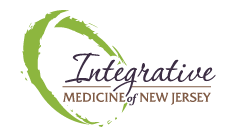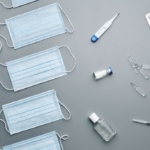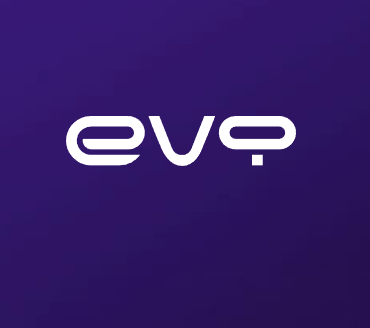Iodine
Remember when vitamin D was the overlooked nutrient?
Thanks to a wide publicity for new findings, awareness has risen and the US RDA got raised in 2010.
Like vitamin D, iodine exerts exceptionally broad and beneficial effects in the body … and it’s in need of renewed attention.
A number of signs suggest that women are at higher risk for inadequate intake … and for iodine-related health problems.
Iodine matters – especially to women – more than most know
Without enough iodine you can’t make enough thyroid hormone … which regulates metabolism, body temperature, muscle growth, and much more.
Lack of thyroid hormone can lead to goiters, fatigue, weight gain, muscle weakness, constipation, and breast cysts or tenderness.
And studies link low iodine levels to higher rates of breast cancer, stomach cancer, and heart disease … while low iodine levels may trigger or aggravate chronic fatigue syndromes.
Why does this link to such a long list make sense?
As a current “Bible” of endocrinology – Lewis E. Braverman, M.D.’s textbook The Thyroid – notes, iodine is critical to the eyes, prostate, breasts, and ovaries.
Surprisingly, just one-third of the body’s total iodine goes to the thyroid gland.
The remainder goes to other tissues, where it exerts anti-inflammatory, antioxidant, and non-proliferative (anti-cancer) roles unrelated to its role in thyroid-hormone production.
Iodine and breast health
Compared with their American peers, Japanese women consume much more iodine – from seafood and seaweed – and they’re about two-thirds less likely to get breast cancer.
Ocean foods also provide Japanese women with far more selenium than their American peers, and that mineral acts synergistically with iodine to support thyroid health.
Breast carcinomas usually develop in ductal tissues normally high in iodine. And when they’re iodine-deficient, these ductal tissues become more sensitive to estrogen’s tumor-promoting properties.
Interestingly, iodine levels rise in breast tissue when women are lactating, and women with breast cancer have lower-than-average iodine levels in their breast tissue.
While diets high in iodine (or selenium) aren’t proven to prevent or treat breast cancer, substantial evidence suggests that iodine-poor diets – and officially “sufficient” body levels – can be risk factors.
A new shortage … especially in women
Most Americans get enough iodine to avoid outright deficiency, as defined by official U.S. standards.
But – as with vitamin D – many iodine researchers question the adequacy of current intake recommendations.
Although the most recent national nutrition survey found that average iodine intake in the U.S. was adequate by official standards, certain groups – especially women – were barely sufficient or outright deficient in iodine.
Notably, iodine intakes among pregnant women are often deficient or slightly “sufficient” (an arguable point at today’s rather low U.S. RDAs), with a median level of just 125 mcg/L vs. the recommended 150mcg/L.
The widespread iodine shortage in pregnant women holds serious implications for mothers and their babies … see “Growing Brains Lack Iodine”.
Iodine deficiency appears to be on the rise again, especially among women … often goes undiagnosed, thanks to the many possible causes of its typical symptoms:
• Dry skin
• Puffy face
• Depression
• Hoarseness
• Weight gain
• Constipation
• Thinning hair
• Cold sensitivity
• Muscle weakness
• Slowed heart rate
• Impaired memory
• Elevated cholesterol level
• Joint pain, stiffness, or swelling
• Heavier or irregular menstrual periods
• Muscle aches, tenderness, and stiffness
Iodine deficiency was common in the early 1900s, until iodine was added to table salts and used to make dairy and baked goods.
Unfortunately, Americans’ average iodine levels fell by half from the 1970’s to the 1990’s – from 320 mcg/L to 145 mcg/L – and have never rebounded.
Some of this decline resulted from substantial drops in the iodine content of dairy and baked goods, due to new production methods … along with common use of iodine-blocking bromides in commercial baked goods since the early 1990’s.
Researchers also blame long-standing (mostly misguided) public health advisories to reduce salt and egg intake for blood pressure and cholesterol control, and a substantial drop in the use of iodized salt in packaged and prepared foods.
Sources
Aceves C, Anguiano B, Delgado G. Is iodine a gatekeeper of the integrity of the mammary gland? J Mammary Gland Biol Neoplasia. 2005 Apr;10(2):189-96. Review.
Aceves C, Anguiano B, Delgado G. The extrathyronine actions of iodine as antioxidant, apoptotic, and differentiation factor in various tissues. Thyroid. 2013 Aug;23(8):938-46. doi: 10.1089/thy.2012.0579. Review.
Aceves C, García-Solís P, Arroyo-Helguera O, Vega-Riveroll L, Delgado G, Anguiano B. Antineoplastic effect of iodine in mammary cancer: participation of 6-iodolactone (6-IL) and peroxisome proliferator-activated receptors (PPAR). Mol Cancer. 2009 Jun 6;8:33. doi: 10.1186/1476-4598-8-33.
Arroyo-Helguera O, Rojas E, Delgado G, Aceves C. Signaling pathways involved in the antiproliferative effect of molecular iodine in normal and tumoral breast cells: evidence that 6-iodolactone mediates apoptotic effects. Endocr Relat Cancer. 2008 Dec;15(4):1003-11. doi: 10.1677/ERC-08-0125. Epub 2008 Sep 30.
Caldwell KL, Jones R, Hollowell JG. Urinary iodine concentration: United States National Health And Nutrition Examination Survey 2001-2002. Thyroid. Jul 2005;15(7):692-9.
Caldwell KL, Miller GA, Wang RY, Jain RB, Jones RL. Iodine status of the U.S. population, National Health and Nutrition Examination Survey 2003-2004. Thyroid. Nov 2008;18(11):1207-14.
Caldwell KL, Pan Y, Mortensen ME, Makhmudov A, Merrill L, Moye J. Iodine status in pregnant women in the National Children’s Study and in U.S. women (15-44 years), National Health and Nutrition Examination Survey 2005-2010. Thyroid. Aug 2013;23(8):927-37.
Cann SA, van Netten JP, van Netten C. Hypothesis: iodine, selenium and the development of breast cancer. Cancer Causes Control. 2000 Feb;11(2):121-7. Review.
Funahashi H, Imai T, Mase T, Sekiya M, Yokoi K, Hayashi H, Shibata A, Hayashi T, Nishikawa M, Suda N, Hibi Y, Mizuno Y, Tsukamura K, Hayakawa A, Tanuma S. Seaweed prevents breast cancer? Jpn J Cancer Res. 2001 May;92(5):483-7.
Hollowell JG, Staehling NW, Hannon WH, et al. Iodine nutrition in the United States. Trends and public health implications: iodine excretion data from National Health and Nutrition Examination Surveys I and III (1971-1974 and 1988-1994). J Clin Endocrinol Metab. Oct 1998;83(10):3401-8.
Nagataki S. The average of dietary iodine intake due to the ingestion of seaweeds is 1.2 mg/day in Japan. Thyroid. 2008 Jun;18(6):667-8. doi: 10.1089/thy.2007.0379.
Office of Dietary Supplements. Iodine Fact Sheet for Health Professionals. Accessed at http://ods.od.nih.gov/factsheets/Iodine-HealthProfessional/
Russo J, Russo IH. Differentiation and breast cancer. Medicina (B Aires). 1997;57 Suppl 2:81-91.
Serra Majem LL, Tresserras R, Canela J, Salleras L. Dietary iodine deficiency and breast cancer mortality: an ecological study. Int J Epidemiol. 1988 Sep;17(3):686-7.
Smyth PP, Smith DF, McDermott EW, Murray MJ, Geraghty JG, O’Higgins NJ. A direct relationship between thyroid enlargement and breast cancer. J Clin Endocrinol Metab. 1996 Mar;81(3):937-41.
Smyth PP. Role of iodine in antioxidant defence in thyroid and breast disease. Biofactors. 2003;19(3-4):121-30. Review.
Smyth PP. The thyroid, iodine and breast cancer. Breast Cancer Res. 2003;5(5):235-8. Epub 2003 Jul 29. Review.
Stadel BV. Dietary iodine and risk of breast, endometrial, and ovarian cancer. Lancet. 1976 Apr 24;1(7965):890-1.
Venturi S, Donati FM, Venturi A, Venturi M, Grossi L, Guidi A. Role of iodine in evolution and carcinogenesis of thyroid, breast and stomach. Adv Clin Path. 2000 Jan;4(1):11-7. Review.
Venturi S. Is there a role for iodine in breast diseases? Breast. 2001 Oct;10(5):379-82.
Zava TT, Zava DT. Assessment of Japanese iodine intake based on seaweed consumption in Japan: A literature-based analysis. Thyroid Res. 2011 Oct 5;4:14. doi: 10.1186/1756-6614-4-14.













